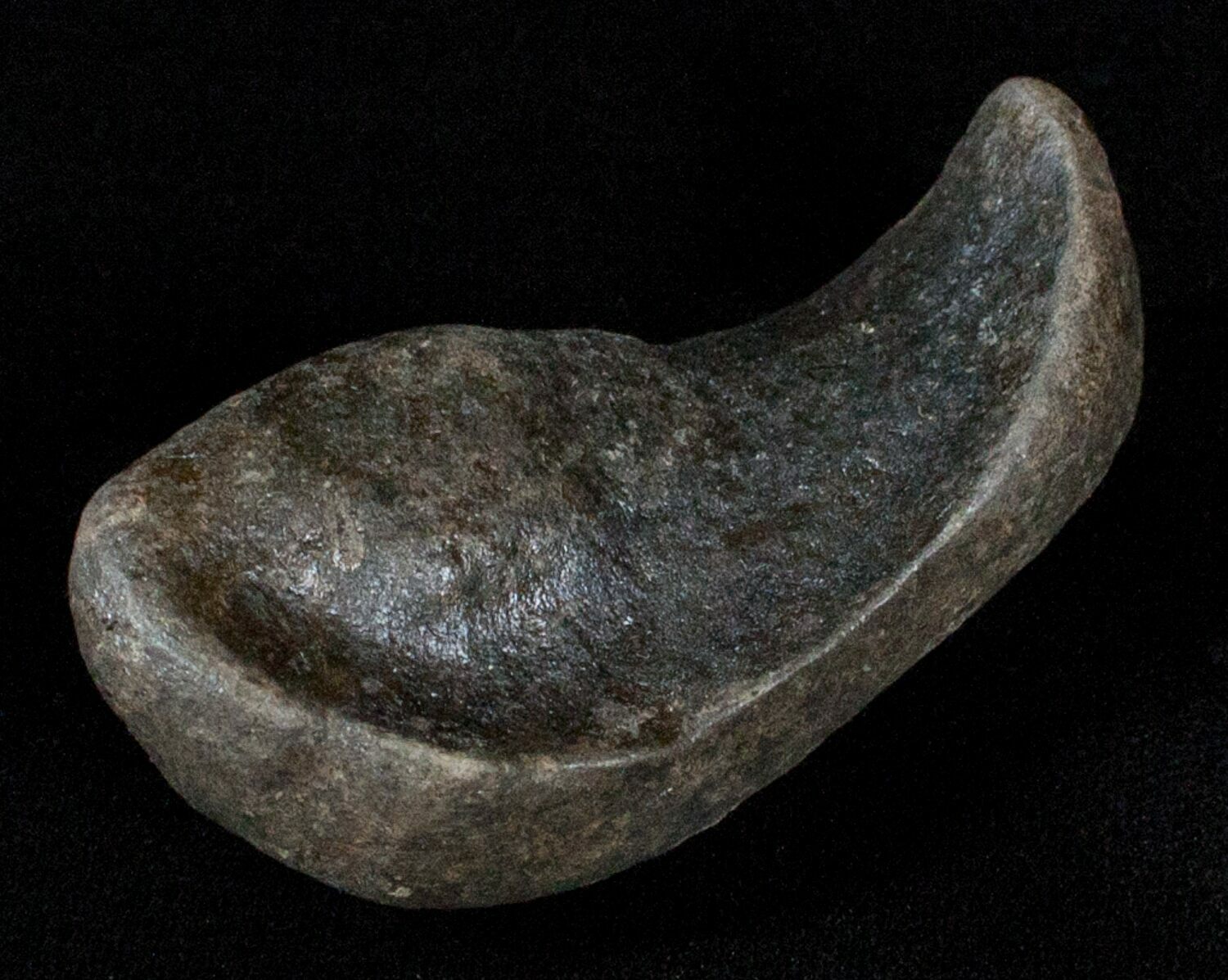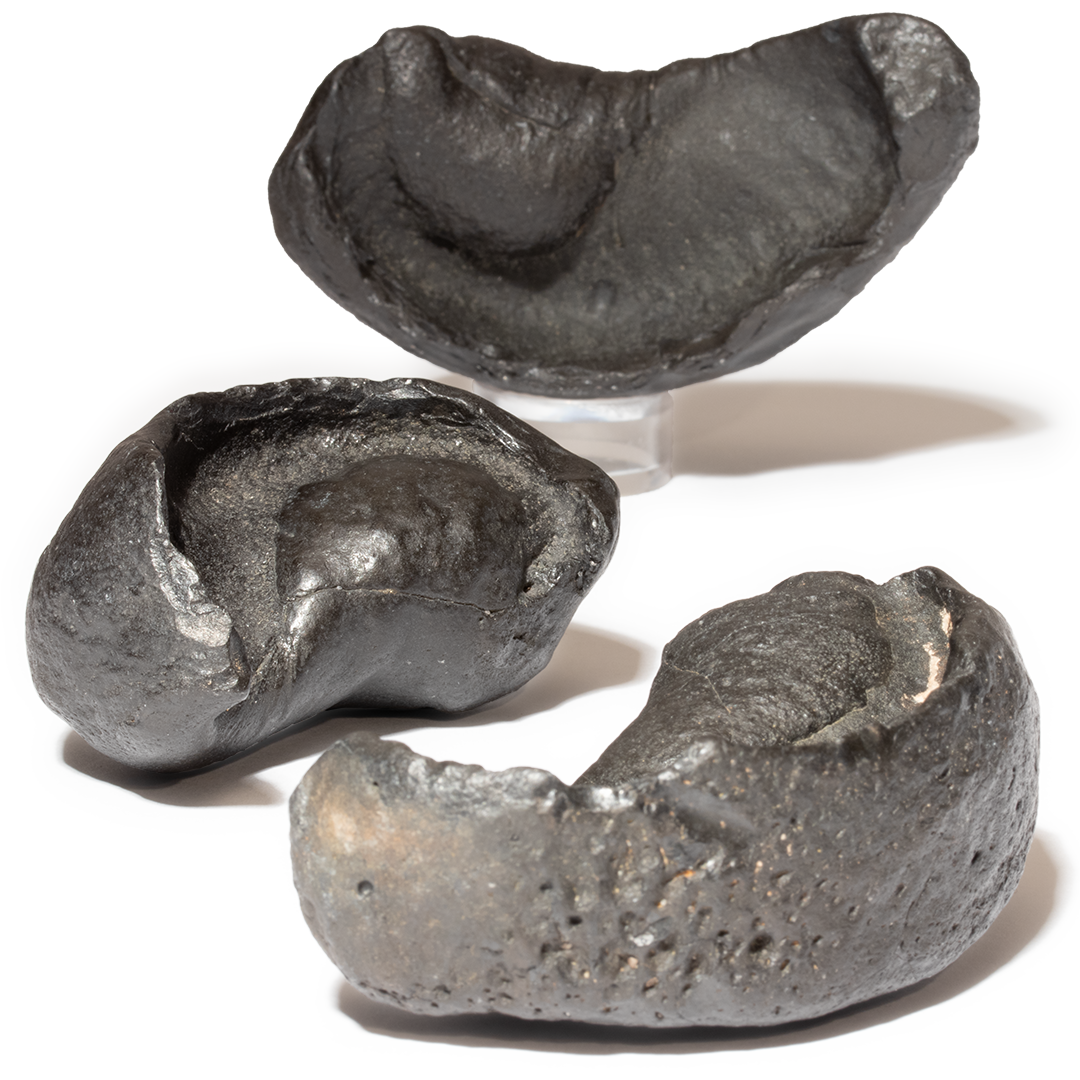
Fossil Cetacean (Whale) Ear Bone Miocene (3475) For Sale
The fossil is so well-preserved that it includes rare inner ear bones similar to those found in modern whales and dolphins. Inspired by the Latin for "echo hunter," scientists have now named.

Fossil Cetacean (Whale) Ear Bone Miocene For Sale (3499)
Adult specimens of fossil baleen whales such as Aetiocetus and Albertocetus have forward-oriented ear funnels. This means that head-on hearing was probably the default state for both baleen.

Fossil Whale Ear Bone Evolution Store
The evolution of whales The first thing to notice on this evogram is that hippos are the closest living relatives of whales, but they are not the ancestors of whales. In fact, none of the individual animals on the evogram is the direct ancestor of any other, as far as we know. That's why each of them gets its own branch on the family tree.

3.1" Fossil Whale Ear Bone Miocene For Sale (99968)
The ear bones of all whales are extremely hard and dense, and they are common in whale fossils found in marine sediments. The internal bony structures related to hearing functions are well protected by the dense and hard ear bones, and are often preserved in exquisite condition.

2.9" Fossil Whale Ear Bone Miocene (99960) For Sale
Fossil Whale Ears Indicate Swift Transition from Land to Sea. By Kate Wong on May 9, 2002. Whales, dolphins and porpoises are the rulers of the open ocean. But it wasn't always so. Some 50 million.

Fossil Cetacean (Whale) Ear Bone Miocene (3503) For Sale
Blubber, blowholes and flukes are among the hallmarks of the roughly 80 species of cetaceans (whales, dolphins and porpoises) alive today. But, because they are mammals, we know that they must.

Fossil Cetacean (Whale) Ear Bone Miocene (3501) For Sale
Whales evolved from animals on land (early relatives of hippos) over a period of 50 million years, slowly gaining their ability to hear sound underwater. At some point during their evolution, the whales split into two groups (toothed and baleen whales), gaining different traits and specializations.

3.4" Tall Fossil Whale Ear Bone Venice Florida For Sale (6085
Instead of hearing through ear canals or the skull, whales channel sound to the ear via a fat pad in the lower jaw. The earliest known whales, called pakicetids, lived 50 million years ago on land and had ears to match.

4.2" Fossil Whale Ear Bone Miocene For Sale (99983)
The discovery of many fossils with transitional features documents the transformation of whales from land animals to ocean dwellers.. and in an extreme form in modern whales. The ear region of.

4.3" Fossil Whale Ear Bone Miocene (40309) For Sale
Specifically the fossil hosts a thick covering of bone over the middle-ear space (called the involucrum). Before this, the involucrum had only ever been seen in cetaceans. The findings are.

3.6" Fossil Whale Ear Bone Miocene (99980) For Sale
A team led by Egyptian scientists have dug up a 43 million-year-old fossil in the Sahara Desert in Egypt of a now-extinct amphibious four-legged whale. That's right, folks — a whale with legs.

Large, 4.2" Fossil Whale Ear Bone Miocene (130240) For Sale
They discovered that both the oldest whale fossil ears and the youngest fetal ears share many features with land mammals — in fact, whale ears have been "acoustically isolated" for the past 45 million years or so, according to Nick Pyenson, the curator of fossil marine mammals at Smithsonian's National Museum of Natural History.

4.2" Fossil Whale Ear Bone Miocene For Sale (40315)
As the earliest whales became obligately marine, all of their organ systems adapted to the new environment. The fossil record indicates that this evolutionary transition took less than 15.

Fossil Cetacean (Whale) Ear Bone Miocene (3492) For Sale
Surprisingly, whale ear bones are rather common in the later fossil record. They seem to have been of denser bone than the rest of the whale skeleton, so they were better preserved. The auditory bulla is a bony cover for the delicate middle ear bones and tissues. In humans it is part of our temporal bone.

3" Tall Fossil Whale Ear Bone Venice Florida For Sale (6086
Living whales have specialized ear bones that let them hear the high-frequency sounds bouncing off their prey. The only known skull of Cotylocara doesn't have well-preserved ear bones, and, therefore, knowing whether the whale could have actually used echolocation for hunting is unclear.

3.4" Tall Fossil Whale Ear Bone Venice Florida For Sale (6085
Although the first ten million years of whale evolution are documented by a remarkable series of fossil skeletons, the link to the ancestor of cetaceans has been missing. It was known that whales.
